Does the French pressure pot make coffee easy to use and taste good? How to use a press to make hand-ground black coffee at home?
When you get a bag of freshly roasted coffee beans but don't know how to cook them, the French kettle is very fragrant. Do not need complex equipment, do not need any water injection techniques, let alone accurate parameters! You can simply make a delicious cup of coffee!

The ultimate goal of all brewing methods is to get a good cup of coffee! I once heard such a share: "how to make coffee by hand?" I don't think it's ceremonial to press the kettle, but it doesn't look very advanced! " How could that be?! Isn't the purpose of making coffee to make good coffee?! Whether it is pressurized extraction, trickling extraction or immersion extraction, the ultimate goal is to release an appropriate amount of soluble substances after the coffee powder is in full contact with water, and finally presents a cup of coffee that can cure people and overflowing with fragrance.

Compared with drip-filter coffee (hand-brewed coffee), the boby of coffee will be more round and sweeter than the coffee brewed in a French kettle. When you get up in the morning or work is tired, it is a very happy thing to brew a cup of coffee that awakens / heals you quickly and conveniently. The origin and popularity of the French kettle first appeared in France in 1850. The predecessor of the French pressure pot is to put a filter with a pressure rod and the same diameter as the container in the container of making tea, so as to better prevent the tea from flowing into the cup after the tea has been soaked. Later, people who like to drink coffee find that the same device can also brew coffee, and the taste is cleaner than that of directly brewed coffee.

So a craftsman and businessman set up the Smith Company, revised the details of the French kettle, and applied for a patent for the piston filter coffee device in 1852 and named it French Press. But at first, the French kettle did not sell well because the strainer could not be balanced after it was pressed down. If you do not hold down the pressure bar while pouring coffee, there will still be coffee particles flowing into the cup along the gap caused by imbalance.

Then, in the late 1920s, a Milan company registered a patent for a modified version of the French kettle and installed springs on the original disc and filter at the bottom of the piston to ensure that the pressure bar would be flush with the bottom of the container after being pressed. there will be no more opportunities for coffee particles to escape. At the same time, the company also improved the overall design of the French kettle and began to sell it commercially within a few years, and people gradually realized the convenience of making coffee in the French kettle. The whole kettle is composed of a heat-resistant glass container and a metal filter with a pressure bar. When making coffee, just put the coarse ground coffee powder into a preheated kettle and pour it into 88-92 degrees Celsius hot water and soak for 3-4 minutes. Finally, press the pressure bar and pour out the coffee liquid to enjoy! 1. First, pour hot water into the pot, preheat the container with a metal filter with a pressure bar, and then pour out all the hot water and set aside.
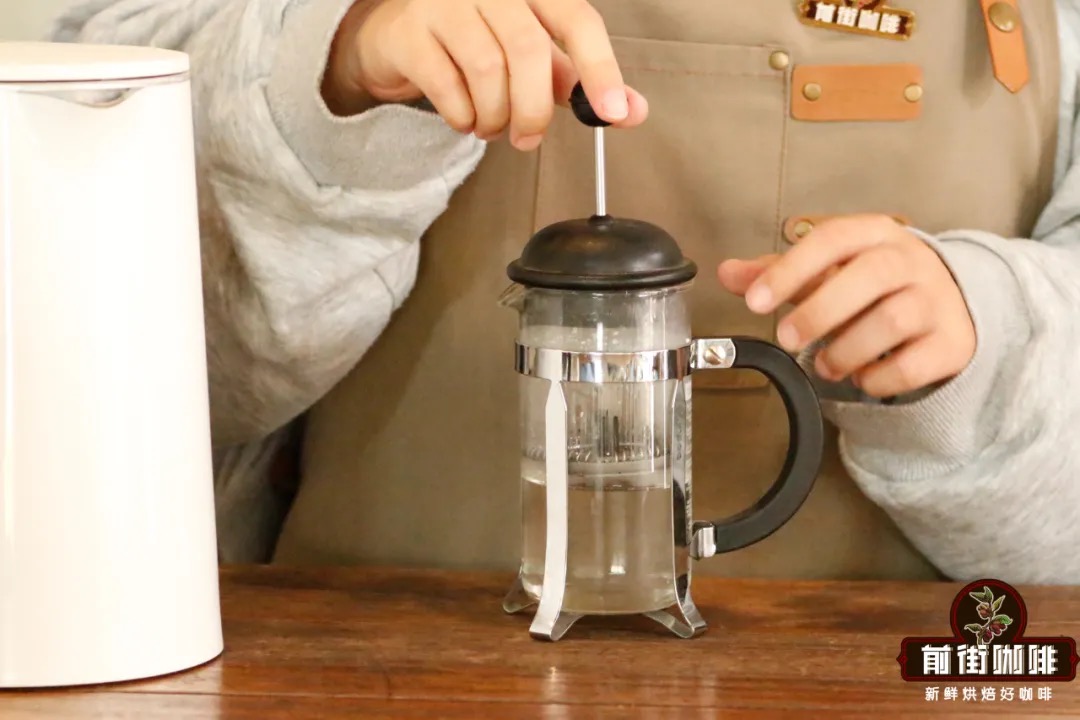
two。 Grind the coffee beans into coarse particles and pour them into the pot ~ the coffee can be ground into the size of coarse sugar! The particles after grinding are about like this.
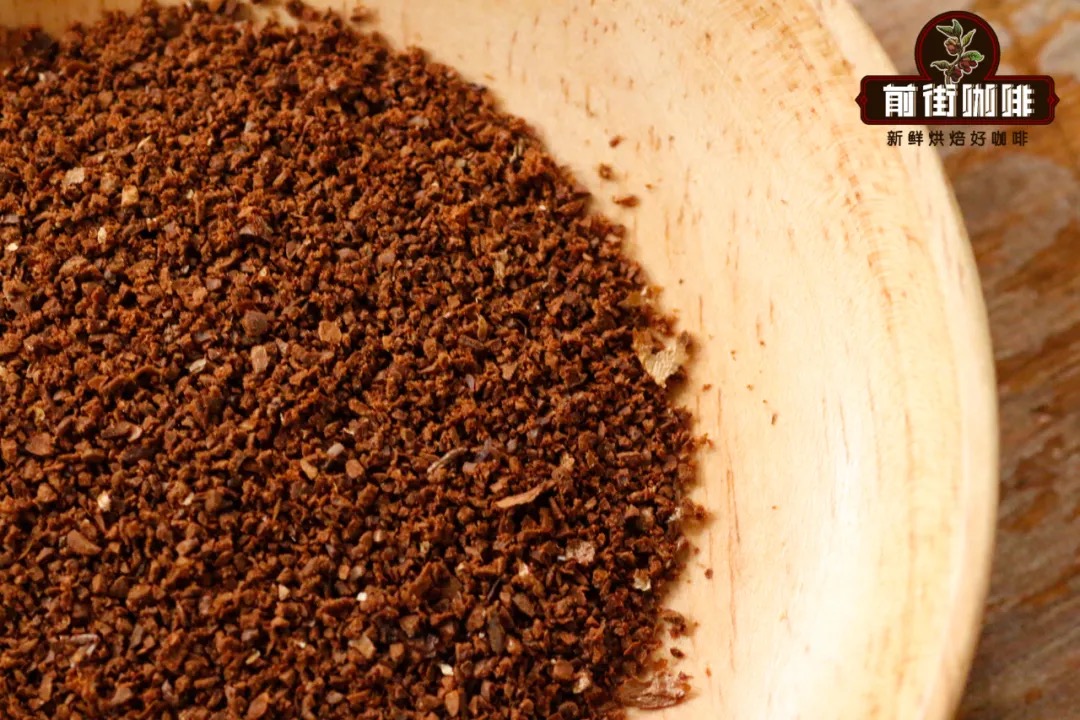
(if you want more accurate grinding data, that is China 20 standard screen pass rate 70% Mel 75%) 3. The amount of powder brewed in the French kettle is recommended to use more than 15g, the brewing ratio is 1:13-1:16 (if 15g powder is added 195240g water) if you want to be rich, 1:13, you can have the right one at 1:15, and you can have the fresher one at 1:16. Of course, you can also adjust it according to your own taste.
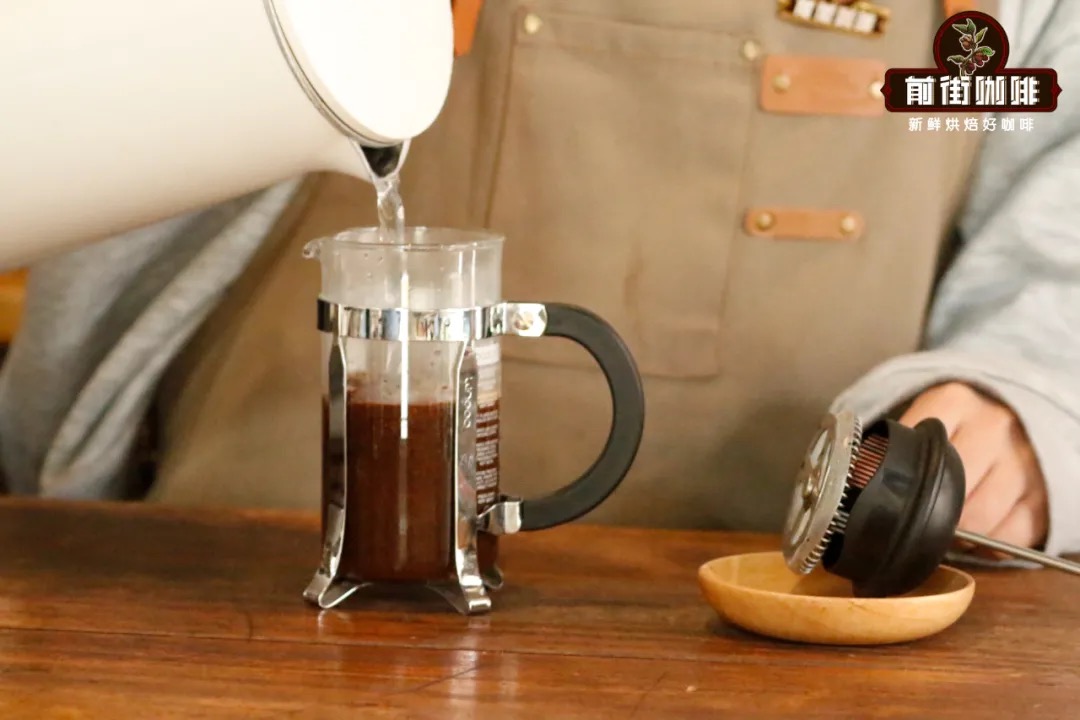
4. Coffee with different roasting degrees should be mixed with hot water at different temperatures. Qianjie recommends that light to moderate roasted (light brown-brown) coffee be soaked in hot water of about 92 degrees Celsius, and deep-roasted (dark brown) coffee should be soaked in hot water of about 88 degrees Celsius. After adding hot water, pull the pressure bar to the top of the lid and cover it. Don't press the pressure bar at this time! )
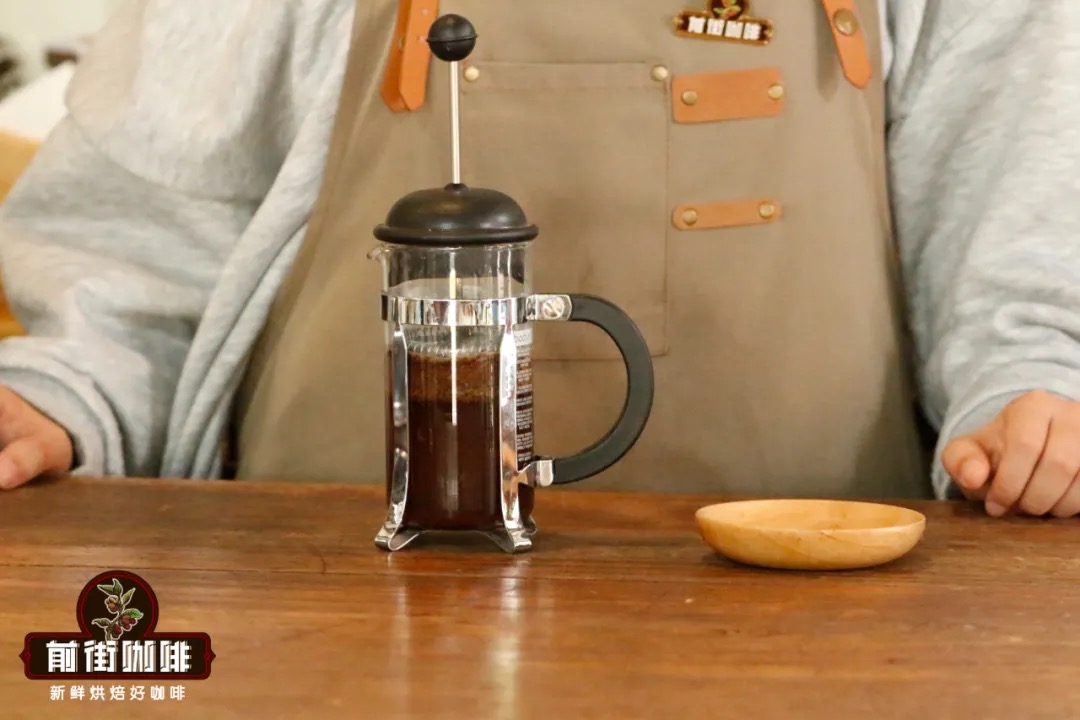
5. The soaking time also varies according to the degree of baking. Qianjie suggests that the soaking time of light to moderate roasted coffee is about 4 minutes, and that of deep roasted coffee is about 3 minutes and 30 seconds. You don't have to soak for long! Since the French pressure pot adopts the direct soaking mode of coffee powder and water, the pleasant flavor can be fully extracted during this period of time. If you soak for too long, there will be a bad flavor of coffee, such as wood or scorched bitterness.
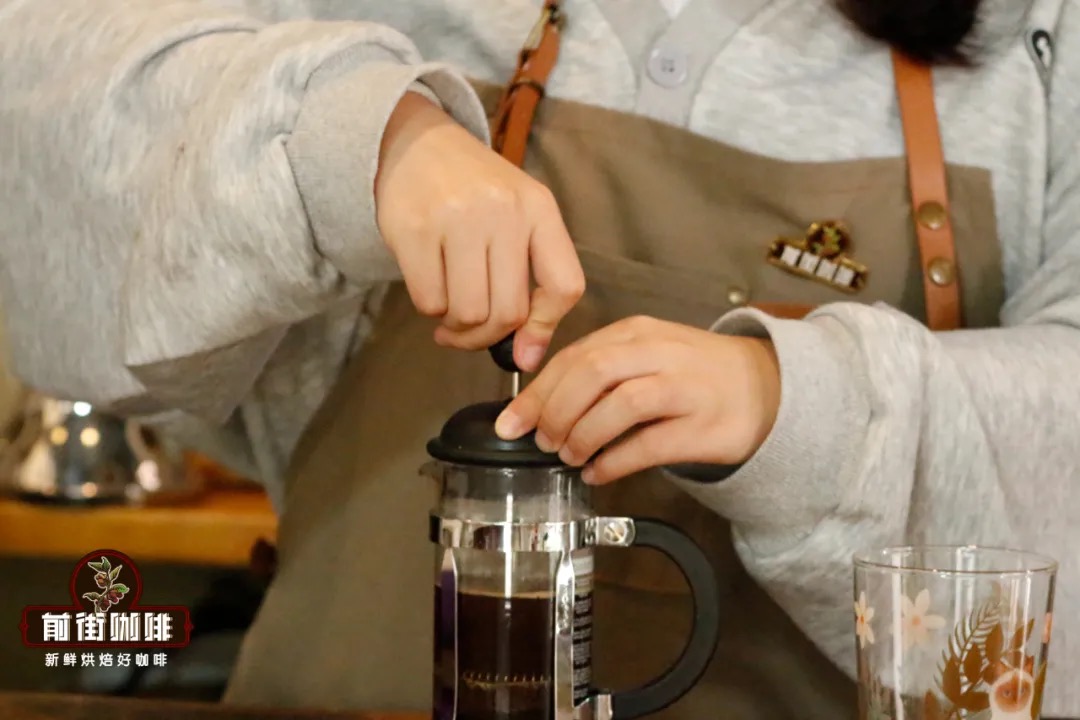
6. Finally, after soaking, press the pressure bar and pour out the coffee liquid at one time. If the coffee liquid is not poured out at once, the coffee particles in the pot will continue to release bad flavor, and in the end, the coffee in the pot will only get worse and worse.
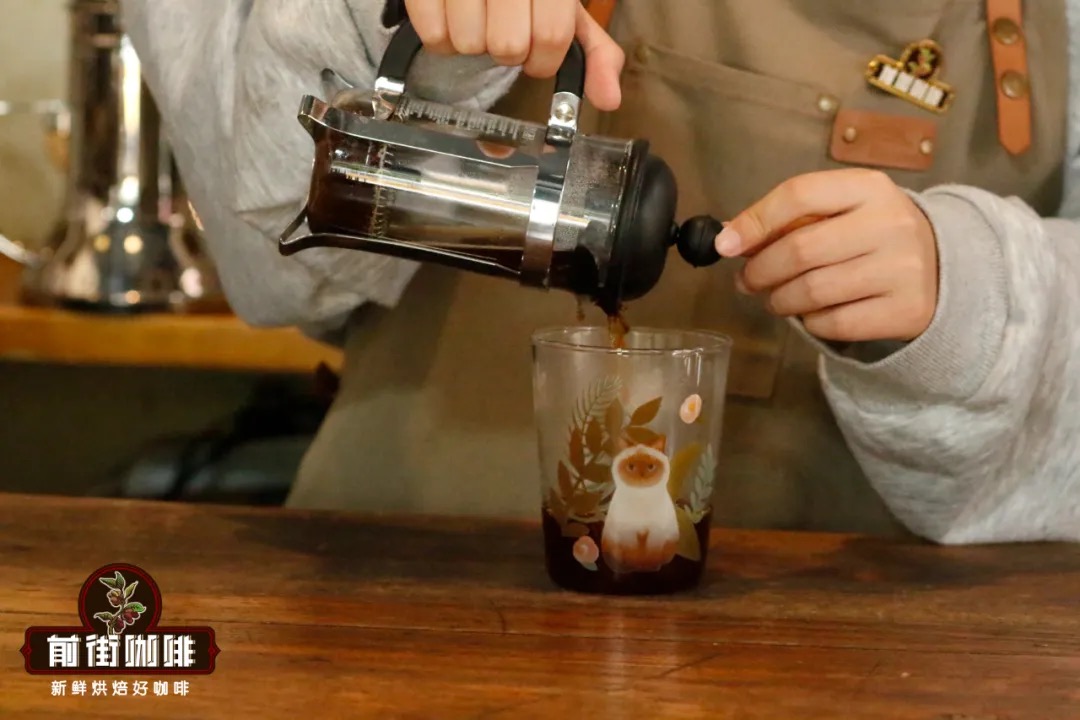
7. Coffee beans will produce oil after roasting, and the coffee kettle after brewing will have a layer of coffee oil. When cleaning the kettle, take apart all the metal parts, whether the container or the parts need to be cleaned with detergent and completely dry, dry and then put away. -making coffee with a sense of micro-residue is the soul of French-pressed coffee! -
Professional coffee knowledge exchange more coffee bean information please follow the coffee workshop (Wechat official account cafe_style)
For more boutique coffee beans, please add private Qianjie coffee on Wechat. WeChat account: qjcoffeex
Important Notice :
前街咖啡 FrontStreet Coffee has moved to new addredd:
FrontStreet Coffee Address: 315,Donghua East Road,GuangZhou
Tel:020 38364473
- Prev

Iced Black Tea's two production methods share the taste of iced tea brewed in cold water and hot water.
Everyone has their own way of making iced tea at home. With so much information and different tips and tips, it's easy to get lost and overwhelmed. Let's simplify the process for you, because making tea is as simple as combining tea, water and time. We will analyze these elements to help you determine which in each case
- Next
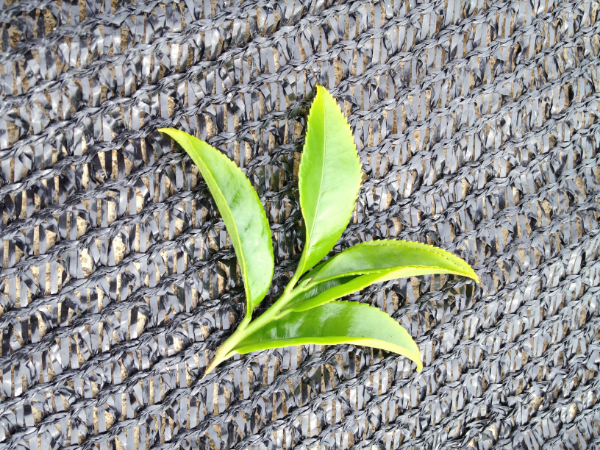
Tea in the best Phoenix single fir oolong production process of the best Phoenix single fir should be brewed? What are the characteristics of Dancong oolong aroma?
Phoenix Dancong Oolong Tea is produced in Fenghuang Town, Chaoshan District, Guangdong Province, China. Together with Tieguanyin, Wuyi Rock Tea and bergamot Tea, Fenghuang Dancong Oolong Tea is one of the four major oolong teas in China. Dancong Oolong Tea is famous for its complex production methods. But Cong Oolong tea is made from the same tea tree, and the method of making tea needs to be based on spring, summer, autumn and winter.
Related
- The milk tea cup becomes smaller?! Overlord Tea Girl launches a new "Return to Yunnan" series
- Accused of selling counterfeit and high-priced coffee beans! Well-known boutique coffee brand "Oukelao" bowed and apologized!
- How to make espresso dumplings? Can I eat coffee and glutinous rice balls together?
- Save the unformed and stagnant powder cakes in one second! What is the problem with stagnant water in the powder bowl of the espresso machine?
- What does hand-brewed coffee stop mean? Why is it not recommended to make coffee by hand?
- Is it normal to smell like coffee? Why does coffee smell like alcohol? What's wrong with the strong smell of cold extract ice dripping ice brewed coffee?
- How to solve the problem that hand-brewed coffee extraction takes too long? Why is the water flowing so slowly when making coffee?
- The main points of making Australian white coffee, the proportion details, how does Australian white properly foam and blend the flowers?
- Can ice water make cold extract coffee? What is the difference between room temperature water and ice water for making cold coffee?
- What milk is best for making latte and white Dirty coffee? What is the difference between different brands of fresh milk and pure milk for making coffee?

